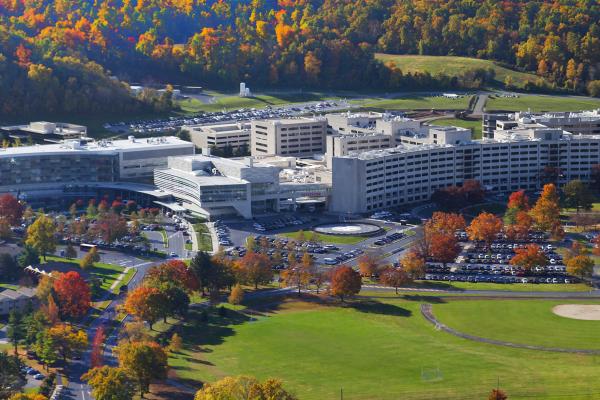Rare Tumor in Protective Nerve Covering
Peripheral nerve sheath tumors begin when a cell in the protective nerve lining develops a mutation, multiplying the cells and creating a tumor. These tumors are mostly benign and solitary, but can be malignant. The most common types of peripheral nerve sheath tumors are schwannoma and neurofibroma.
Peripheral nerve sheath tumors typically appear within nerves surrounding the brain, spine, body or extremities.
Symptoms, Diagnosis and Outlook
Symptoms of peripheral nerve sheath tumors include:
- Hearing loss
- Mass (lump) under skin that continues to grow
- Numbness
- Pain
- Weakness
If your physician suspects you have peripheral nerve sheath tumors, he or she will order tests to confirm the diagnosis. Peripheral nerve sheath tumors can be seen in the following diagnostic imaging:
- Classic appearance on MRI scans
- Visible on ultrasound or CT imaging
- Biopsy of the affected area is rarely needed
Risk factors for peripheral nerve sheath tumors include a hereditary genetic link and for malignant peripheral nerve sheath tumors, previous exposure to radiation cancer treatment and a hereditary genetic link. The outlook for patients with this disease depends on several factors, including tumor size, location and if the tumor is malignant or benign.
Our Experts in Care
Experts at Penn State Health offer comprehensive diagnostic imaging and multidisciplinary treatment options for patients with peripheral nerve sheath tumors.
Find a Doctor Near YouWhy Choose Penn State Health for Care
Expertise in Central Pennsylvania
Our experts are specially trained to diagnose and treat peripheral nerve sheath tumors. Penn State Health is the only location in central Pennsylvania to offer multiple subspecialty clinics and multidisciplinary conferences for ongoing specialized management to patients.
Treatment Options for Peripheral Nerve Sheath Tumors
Our expert team at Penn State Health will assess your peripheral nerve sheath tumor and use diagnostic testing to determine if it is malignant or benign. Treatment options include:
- Periodic monitoring with examination and imaging
- Emerging chemotherapy and immunotherapy treatment options
- Surgical removal to minimize the risk of damage to the normal nerve fibers and structures surrounding the tumor
- Gamma Knife (highly focused radiation)
- Percutaneous treatments to freeze or heat the tumor, causing it to stop growing – and in some cases, to shrink the tumor
Neurofibromatosis Care
Penn State Health treats all types of neurofibromatosis, including neurofibromatosis 1 (NF1), neurofibromatosis 2 (NF2), schwannomatosis (SCHW), as well as Neurofibromatosis-like disorders. Penn State Health sees more than 500 adult and pediatric patients with these conditions each year. Our specialty team provides patients with a multidisciplinary approach to tumor management. Patients with neurofibromatosis 1 (NF1) have a higher risk of developing malignant peripheral nerve sheath tumors.
Support Groups
If you or a loved one has a peripheral nerve sheath tumor, our team is here to connect you with others in similar situations. Learn more about support groups offered at Penn State Health Milton S. Hershey Medical Center.
Convenient Locations
Find the care your family needs, close to home, at one of our many locations throughout central Pennsylvania.
Find a location near you



